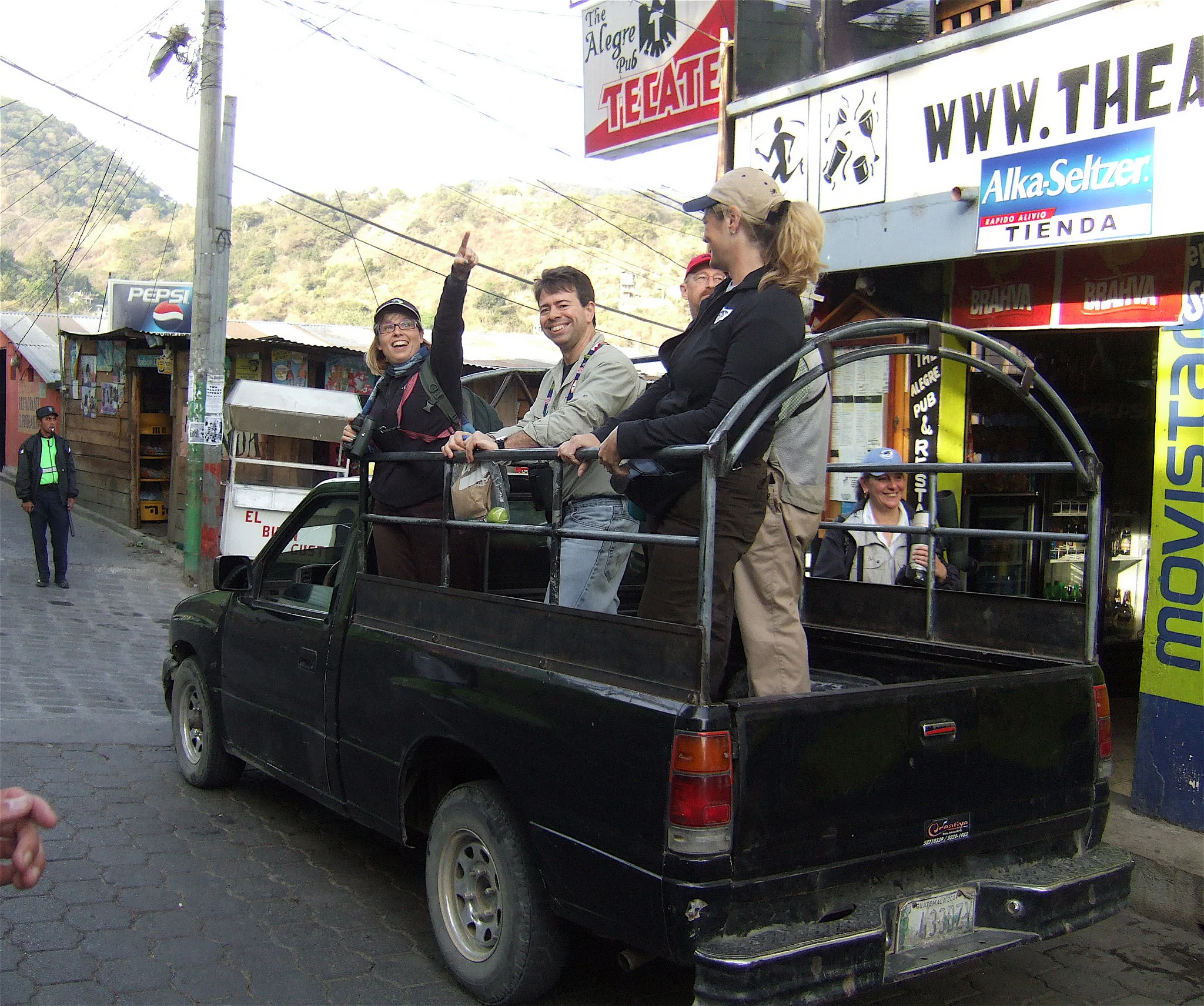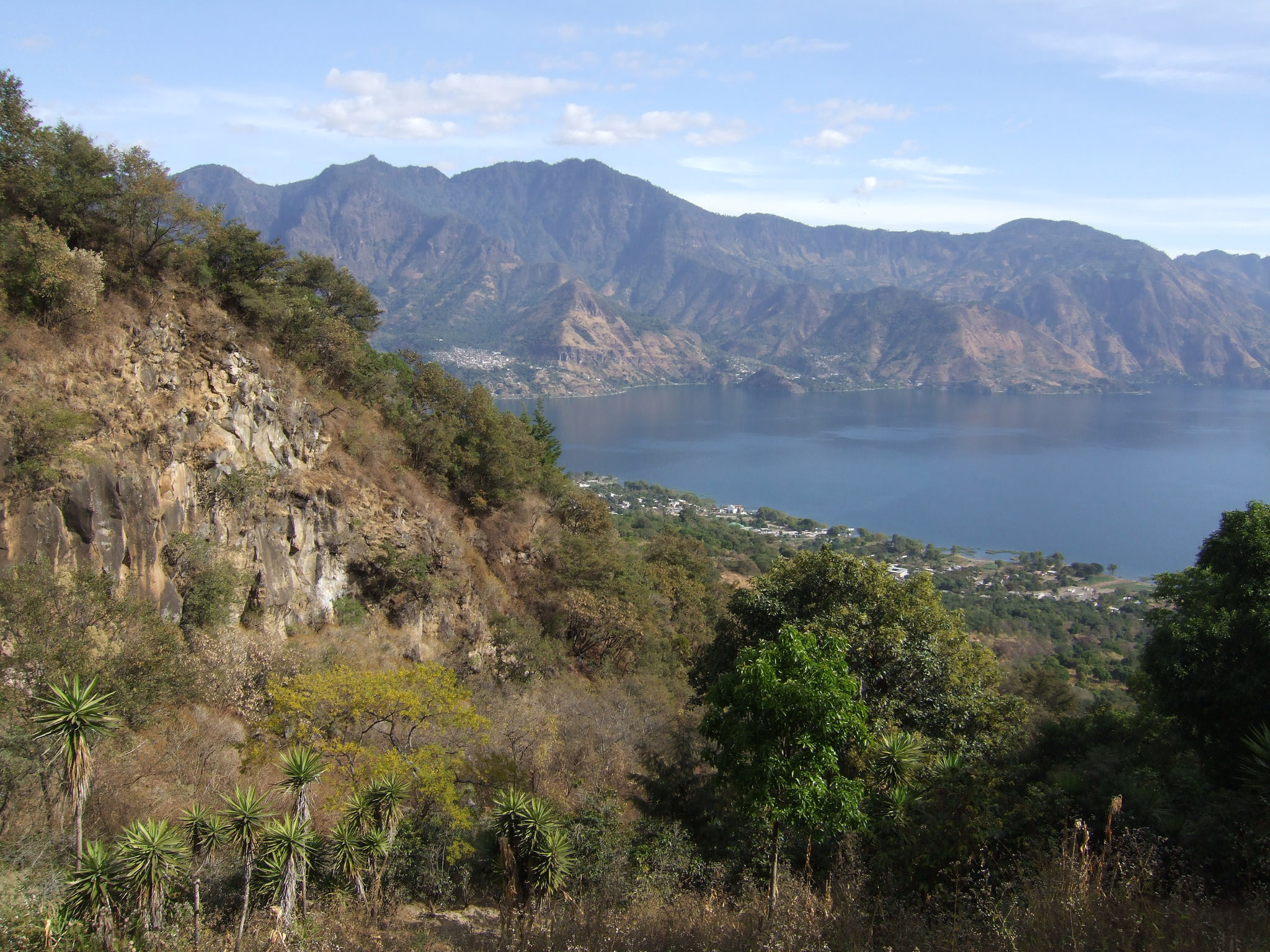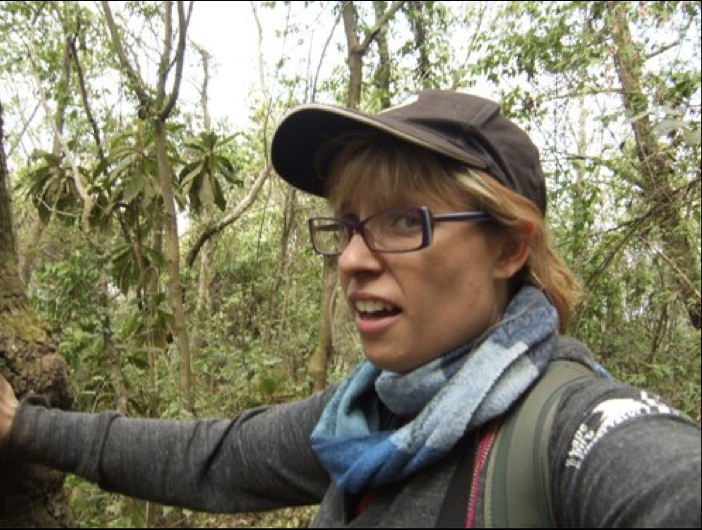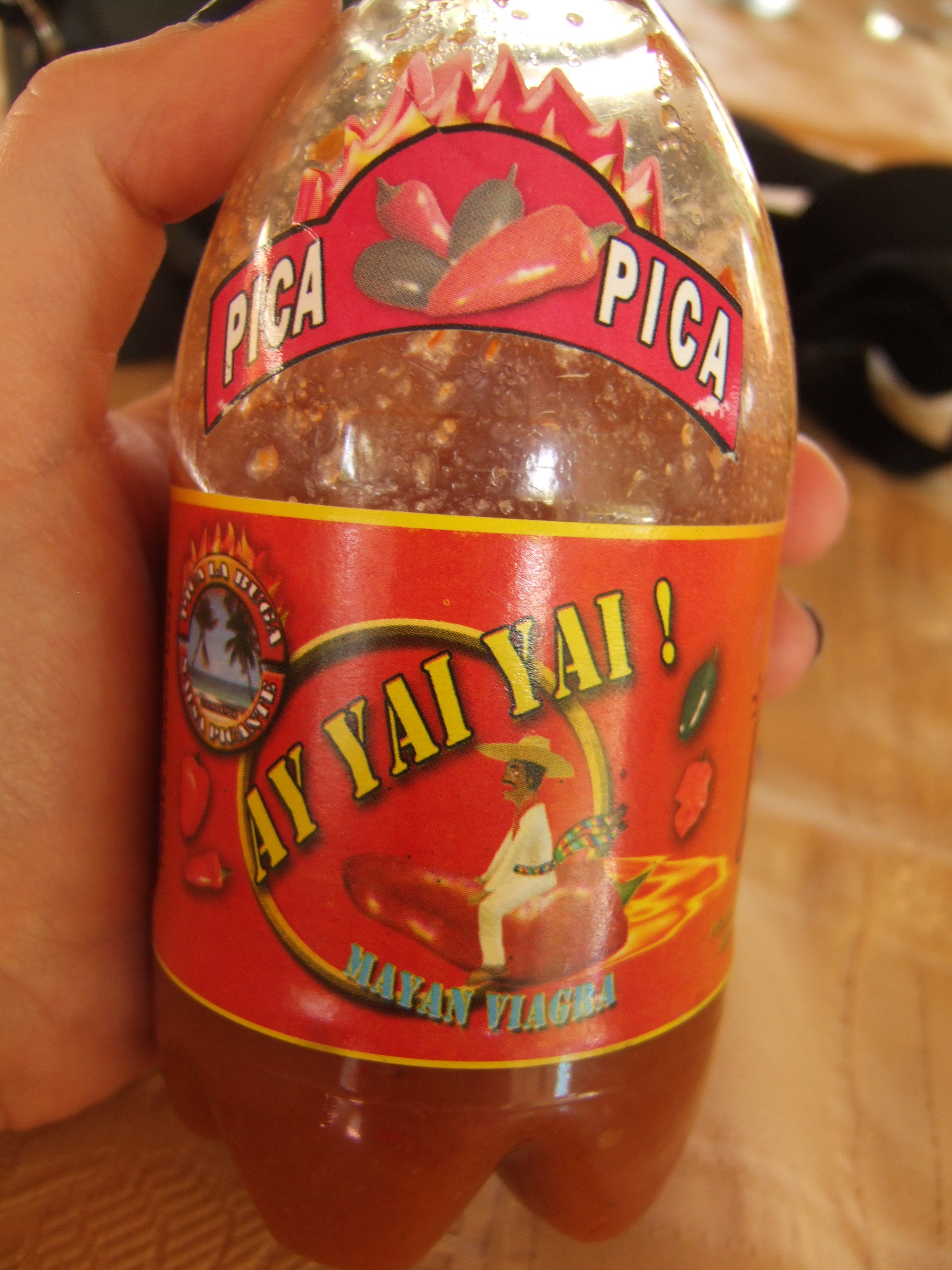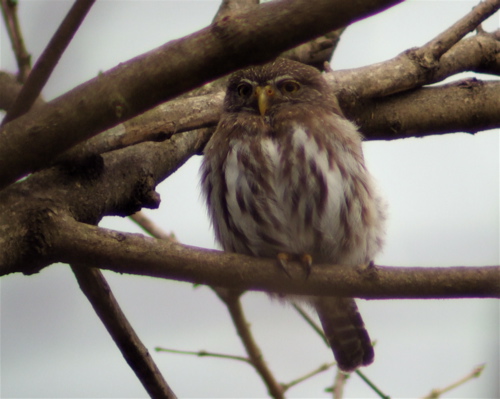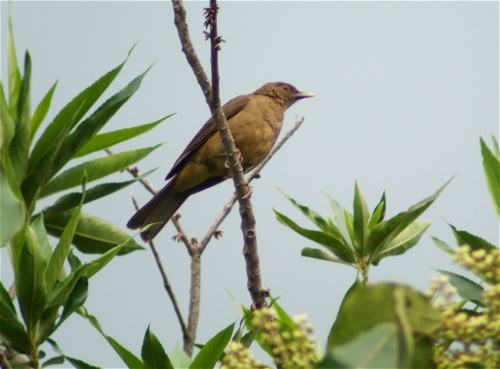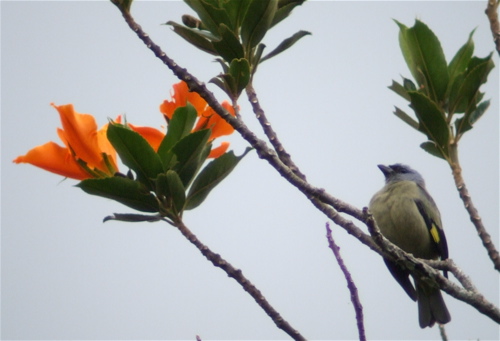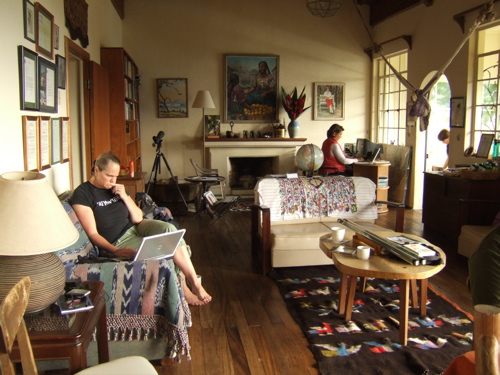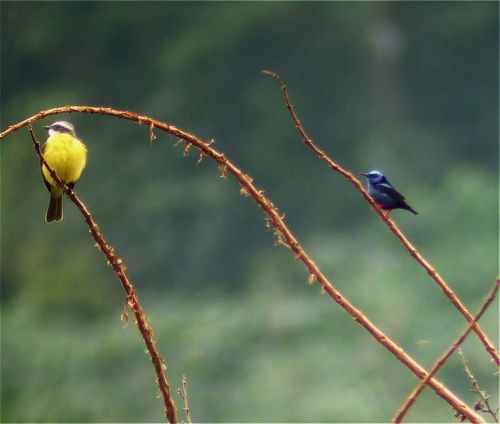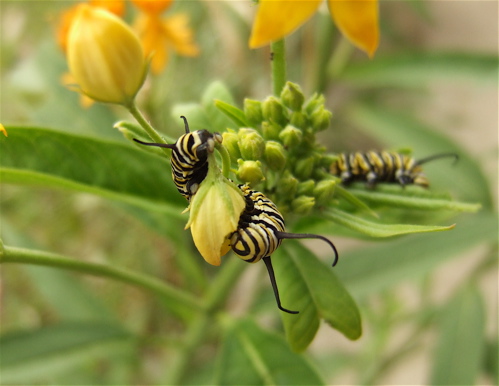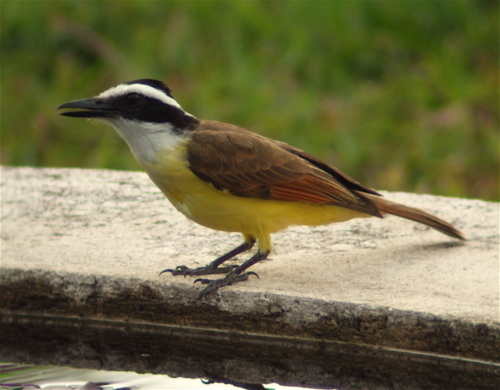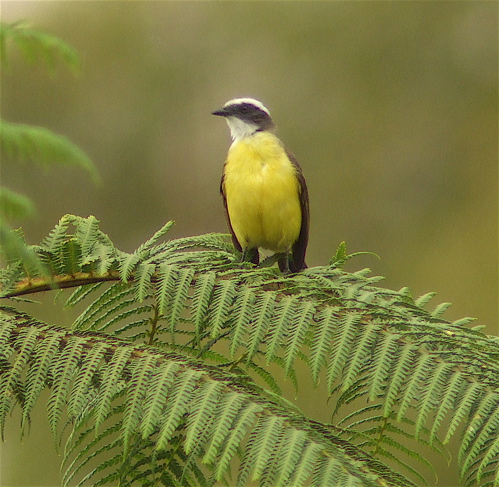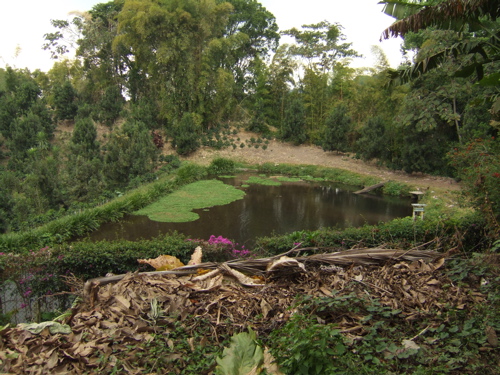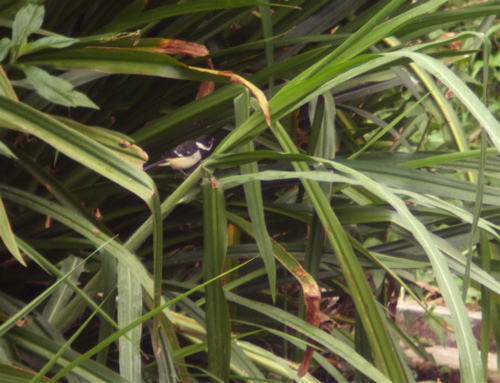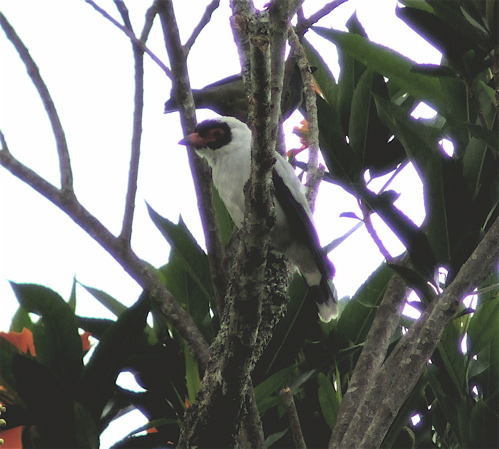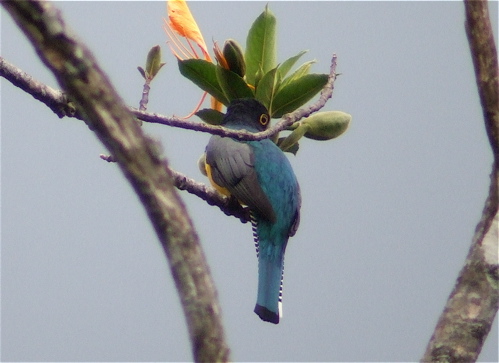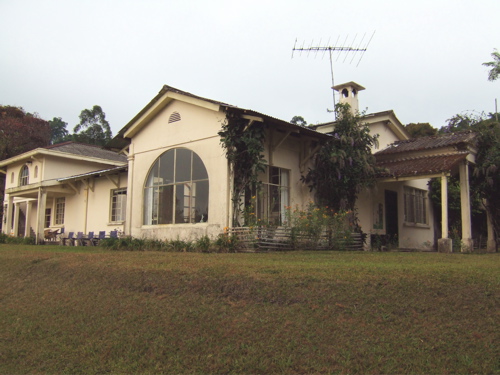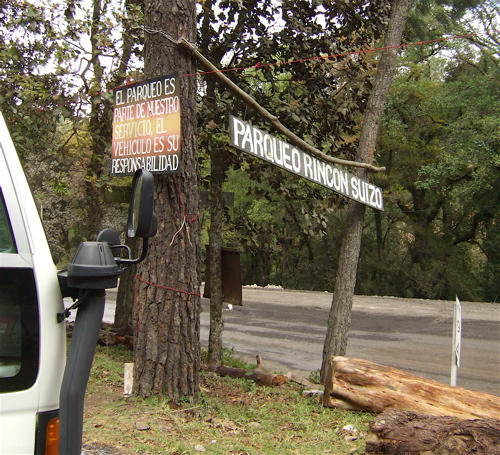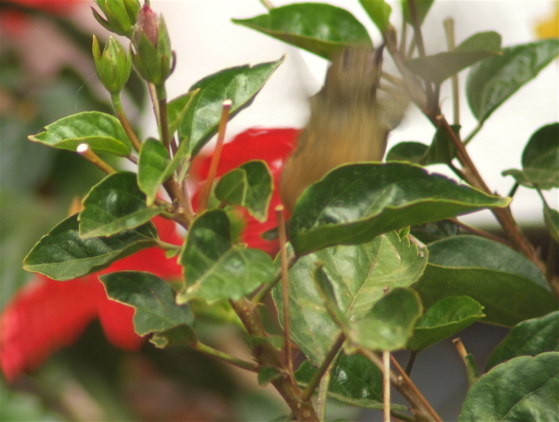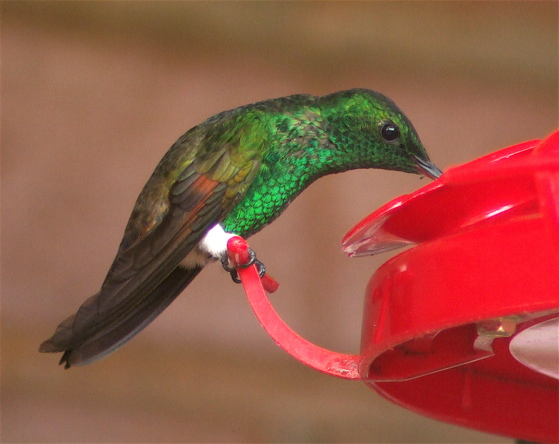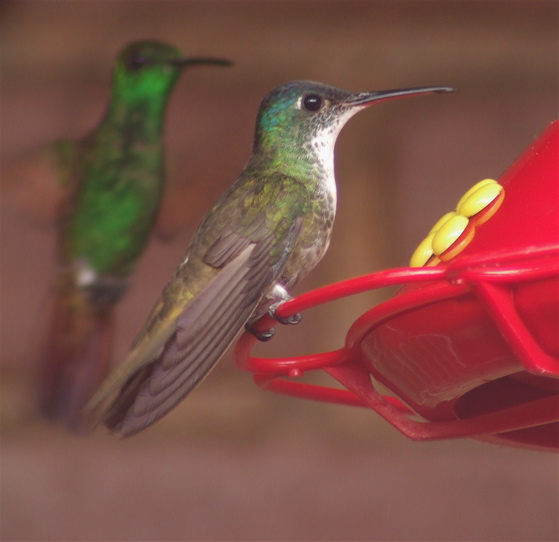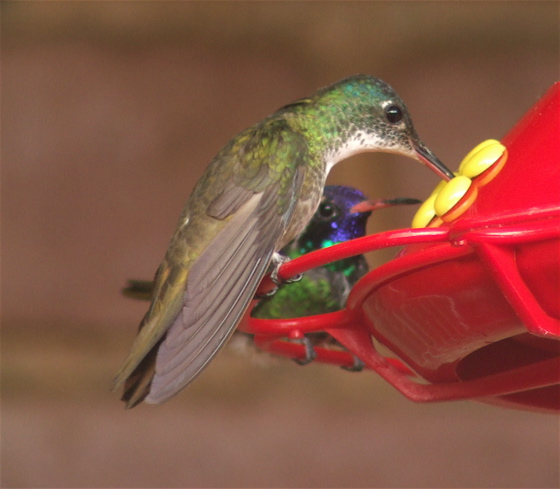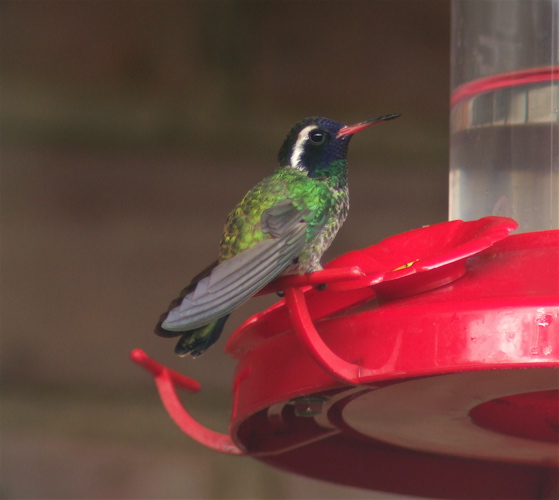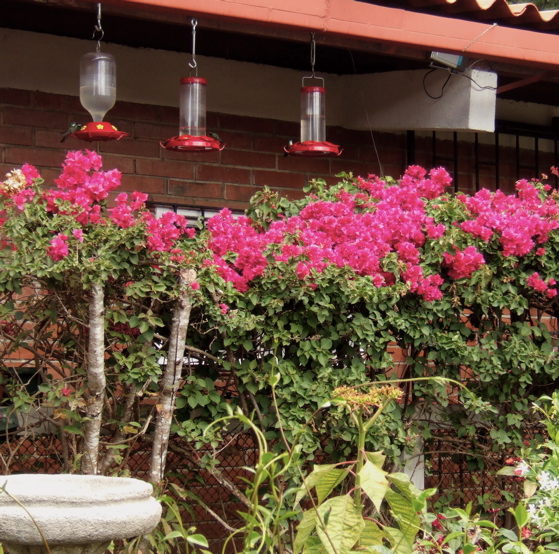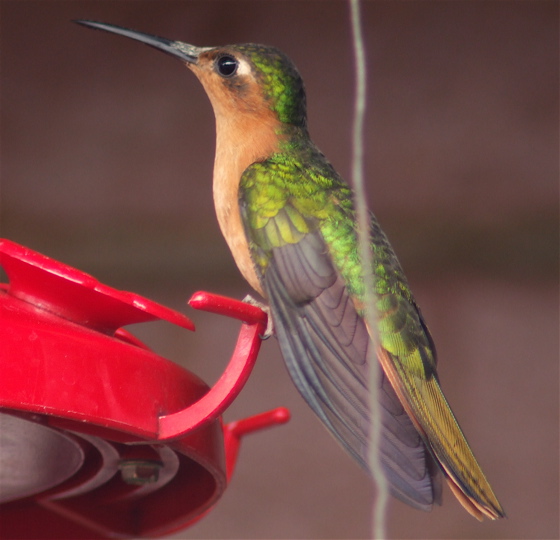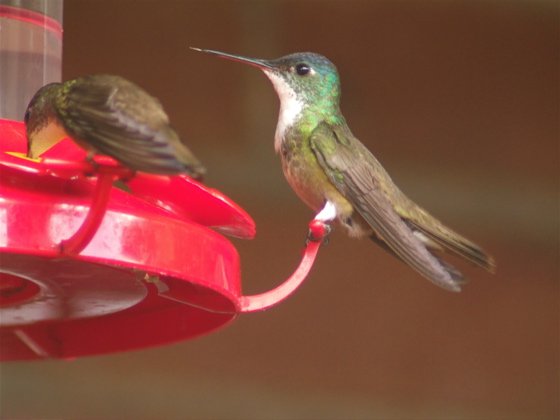This post was updated December 19, 2017 when I noticed many of the photos were gone after transferring the blog from Wordpress to SquareSpace. I also updated some of the text. It was originally two posts and now I've condensed it to one.
This particular toy at the top of this post is a replica of a horned guan. You can get them from knock-off Kinder Eggs called Yowies—which for whatever reason are legal in the US. I was going to just buy the eggs until I got my guan, but the chocolate is nasty. Rather than going the traditional route of purchasing several inedible eggs, I found someone on eBay who already had the guan and for the price of one Yowie egg I had the guan sent directly to my home. To people who say this is cheating...I say, "Bite me."
A horned guan is one of the rarest birds in the Americas. Imagine a black and white bird the size of a turkey that has a bright red horn on its head that lives in the trees on the side of a volcano. Even if there weren’t only 600 or so of these birds left in the world, they're are still an amazing sight.
If I truly understood what was ahead of me to see a guan, I don't know that I would have gone for it. There were tales from some of my buddies on the bird festival circuit that it was a horrific climb. I had heard of well-known, great birders, who I considered to be physically fit, having to crawl that last part of the trail just to see. Here's Julie Zickefoose on NPR and on her blog or Bill of the Birds on his horned guan search. I think a part of me thought that was just a bit of exaggeration--birders have their fish stories too.
The hike up Volcan San Pedro was saved for one of our final days of birding in Guatemala. Our group had been mentioning it to each other, "Do you think you're going to be able to do it?" or "Sharon, do you really think you can take your scope up the volcano, I'd leave it here."
I heard that previous male birders had brought their scopes, so I thought that I should be able to do it too. I didn't get very scared until the day before. I had found some wifi at our lodge in Los Andes and put up a status update on Facebook: Sharon is nervous about tomorrow's climb up the Volcano to see the horned guan. I got a comment from Chris Benesh who works for Field Guides--travels all over the world to show people birds. He was also on the same Ivory-bill Search Team I was on. I considered to him to be very physically fit. He left a comment to the effect of the climb being the toughest he had ever done, it was brutal, but the got the guan.
Okay, if Chris called it brutal, maybe those stories of birders panting and crawling to the top weren't just exaggerated fish tales. I decided to be all Scarlett O'Hara about it and, "I'll not think about that right now, I'll go crazy if I do. I'll think about that tomorrow."
We had one more field trip planned at Los Andes to look for some mannikans, I opted to take the afternoon off, relax a bit so I could be fresh the next morning. The next day was a rough schedule. We had to be ready to go by 4:15 am, take a bus to Lake Atitlan where we would take a ferry to San Pedro for the climb. The hike up to the guan was going to take four hours, who knew how long the hike down would take.
Gulp.
Initially, all went well. We arrived at Lake Atitlan and watched in amazement at how the locals used the water. As we were loading our ferry, one man drove in his tuk tuk (tiny taxi car) into the water for a wash, another drove in his truck, a couple of people were bathing in the nude right on the water's edge.
Volcan San Pedro...were we really going to climb that?
We boarded boat, marveled at the beautiful volcanoes that surrounded the lake and laughed as the cool water sprayed us as we hit waves. Outside the boat we looked to pad our species list with lesser scaup, brown pelicans, and ruddy ducks. As we approached the other side of the lake, we watched in amazement as Volcan San Pedro loomed over us. Yes, we would be climbing this extinct volcano. Hugo, our guide tried to alleviate our fears since many of us were not accustomed to this altitude. In his quiet, spanish accent he said, "Yes, we will go slow. It will be slow, slow walking, then looking at birds, slow, slow walking, then looking at birds."
I felt some comfort in this. Perhaps the four hours was not all climbing but just such a slow pace of birding that it would seem steep, but not be that bad.
When we landed in San Pedro, I saw more tourists here than in any other town. Peddlers were ready for us, a Mayan woman greeted us with a basket full of baked goods. I looked at the steep streets in front of us and wondered if we were going to start right away, but our local guides and hosts Irene and Ana Christina said that a bus was coming to take us.
Our "bus" was a pick up truck and they ended up corralling ten birders like livestock in the back to take us up to the horned guan preserve.
I love this photo. We’re all so happy, so giddy, so blissfully unaware of the horrors and sweat that awaited us. That’s me with Mike Bergin of 10,000 Birds, Jen Sauter, Hugo our guide and even a part of Rick Wright. It was all just an exciting adventure then.
This poor guys was carrying what appeared to be recently washed blankets up a steep road.
We began our drive through the narrow cobblestone streets of San Pedro, up and up we went. We passed many locals taking the route on foot, many carrying piles of goods on their backs. What is it like to be acclimatized to this?
We arrived at the reserve for the horned guan. We readjusted our packs with our lunches and our bottles of water and began the trail. The day was sunny, the birds were numerous and we made some stops.
We found a spot loaded with western tanagers (more of those North American breeders). I was excited to get the rufous-capped warbler. I had actually seen one of these earlier in our journey, but was the only one who had. I was glad others got to see it and this time I even got to digiscope it. We also got great looks at this ginormous squirrel cuckoo—it was much bigger than the black-billed and yellow-billed cuckoos I see. And so beautiful too—reminiscent of a brown thrasher.
Rufous-capped warbler.
As we stopped for all of this birding, I started to think, “This isn’t so bad.” I have short legs and I was not used to the elevation but was doing ok. I did lag behind the group but always managed to catch up with enough time to rest along with them before pressing forward. I felt that I could do this.
The relentless trail to the guan...five hours of this nonsense.
But then we didn’t stop for birds anymore and the trails became much steeper. It was switchback after switchback. It was dry and the volcanic dust made for powdery walking conditions. I toiled up the trail and as my pace slowed, the sound of our group ahead became more and more faint, I realized I was losing ground. There was another person named Mel in our group who seemed to struggle with the climb along with me. I was grateful for the company and to not to be the pokiest of the little puppies.
This guy booked it past me like the switch backs were nothing.
Local farmers loaded with burdens of fire wood, corn or coffee moved swiftly passed us on the trail. Many looked to be twice my age which made me feel worse. I bike ride, I lead nature hikes, I haul bee equipment and this trail was turning my legs to jelly. It was relentless in its incline. I was desperate for a flat surface. The high elevation and lack of oxygen didn’t help either. Life in Minnesota rarely exceeds 850 feet. The trail starts at about 5000 feet and has a change of over 4000 feet.
The gorgeous views on the climb.
After much sweat and panting my slow friend and I caught up to the group at another resting spot. I hoped that we were half way up and was saddened to learn that we were only a third of the way, with another three hours to go. It was at this moment that Gustavo from Neblina Tours told me , “I’m having trouble staying balanced on this steep trail. Would it be alright with you if I took your scope and used it as a way to balance myself on the trail?”
One of our guides Hugo on the left. Gustavo on the right holding my scope...note how much equipment he was carrying besides my scope.
It was lie. He carried more on this trip than I did: he had two massive field guides besides his binoculars, lunch, water, recording equipment, etc. I knew it was a lie and I was too sweaty and tired to care. I gratefully accepted his offer and continued my slow lumbering walk up the trail.
We eventually made it to a halfway point. I sat on the floor of the observation deck and used the wooden railing to prop my head up and looked out at the beautiful view. I was seriously questioning my life choices. I was not forced to do this, I signed up--willingly. What’s worse is that I could have stopped at any time. I could have just stopped walking on the trail and said, “No more, I’ll wait here in the shade, watch some foliage-gleaners and pepper-shrikes and wait for you on your glory walk down the trail after seeing the guan.” One of our group already had given up the trail due to a bad knee. It was the honorable and safe thing to do. But I willingly continued. Quitting this steep upward battle was never an option to me.
I looked at our group and said panting, “This is like hitting yourself with a hammer because it feels so good when you finally stop.”
We laughed and Hugo warned that we should probably save our oxygen.
Jen soon joined Mel and I as those lagging behind now and two of us practically held on to each other to stay upright. Ana Christina from the tourism board sensed our waning resolve and anytime we paused she would call in her sweet Spanish accent, “Jen, Sharon, come on, the horned guan is right up here.”
We fell for it once and scrambled up, but realized she was really a cloud forest sprite beckoning us forward. It worked. At every switchback we would pause to try and get some order to our respiratory system, Ana Christina would be another switchback ahead of us calling, “C’mon Jen. C’mon Sharon, horned guan is waiting for you.”
We finally reached the horned guan appropriate elevation. I sat in the dust. Gustavo smiled and pointed out how dirty my face was. Fuck you, Gustavo. Part of our group rested, while the rest did an initial search.
The exact moment I realized I hated birds and that I may need psychological help.
I took a picture of myself at this point. I wanted to remember forever the exact moment I realized how much I hated birds and that I needed psychological help. What the fuck was wrong with me. I had heard how horrible it was and I kept going, for what? For the high of seeing one rare bird.
No guan. We needed to go higher. Fuck everything.
We paused once more. Optimism was fading in the group. A few still held out some sweaty hope, but the rest of worried that we’d been talking too much or paying more attention to our body and foot aches and completely missed the turkey sized tree chicken that was our quarry. One guy even said, “You know, we could go all this way and not see it.”
This was the first time in my life I ever felt the deep, gutteral desire to throat punch someone.
Then an anxious whisper came from above us, some crazy asshole in our group was still climbing and went two switch backs up…and found the guan. All of us suddenly forgot body fatigue and dashed up the switchback—where had this new-found energy come from?
Horned guan foot.
The light broke through the trees and…all I could see was a bird foot. Fuck you, bird. I was going to count it, but if this was all I’m going to get of you. Fuck you.
Finally, a little head poked out. I saw the horn, the little red horn where the guan gets its name! And the crazy yellow eye! At first we thought there was one guan, but there were two…and then a whole flock of about 7—they vocalized, they displayed, they flew! My little head exploded in awe as I realized I was watching what is arguably the most endangered bird in the Americas.
Horned guan in all its crazy glory. Alas, this was back when I was digiscoping with a point and shoot. Oh the photos I could get now with a smartphone.
And after all of that, we had to go back down! Certainly it would not take the five hours that it took to get up to the guan, but it would still take time. My legs are only used to flat surfaced and had been trudging uphill for four hours non stop. And now I had to go down, something I still wasn't used to. Every muscle in my legs vibrated at any moment I stopped. I kept going, but the decline and volcanic ash still caused me to slide and fall. Every time I did fall, a large cloud of dust preceded me, causing Hugo to cross his arms and shout, "Safe!" as if I were a baseball player sliding into home. Fuck you, Hugo.
Some way, some how we made it back down the trail to our meeting point, our water bottles depleted. Ana Christina took us to a local watering hole for some refreshments to wait for the ferry. In our dehydrated state, we should of have had water, but it wasn’t safe for the American to drink so our only option was beer. Giddiness soon set in with most of us, especially for me--I NEVER HAVE TO DO THAT CLIMB EVER AGAIN. It occurred to me that a horned guan is a bird that I will only see once in a lifetime and I had a pang of pity for guys like Hugo and Mel who would have to lead a tour here again and take people up that volcano. Those poor god damned bastards.
One of the many Mayan ladies who sensed our fatigue and tipsiness and used the opportunity to relieve us of many quetzals in exchange for their exquisite and colorful textiles.
We finally crossed the lake and checked into our next lodge. I took a very long shower with my scope and binoculars to clean off all of the volcanic dust. By the time we were settled and clean it was 8:30pm when we sat down for dinner of squash soup, homemade tortas, fruity drinks and rich dark Guatemalan run.
I've only ever seen this hot sauce in Guatemala. It was as tasty as it was hilarious.
We discussed the next day's birding. After getting our stuff together at 4:15am that morning and birding almost 12 hours, I was delighted to hear that we were meeting at 7am for breakfast before birding (we'd get to sleep in).
Mel said in a panicked voice, "Hey that means we won't get birding until 8 - 8:30 am, anyone for starting earlier?"
Goddamn lister was already on the quest for more birds.
Hugo our guide said, "Well, it's whatever you want..."
There was a pause, I could tell by some in the group that they needed the rest as much as I did but didn’t want to look like the weenie and say no. I myself have no problem saying no.
"I gotta say that I'm not in favor of that idea and would rather sleep in and rest after today."
Mel looked disappointed, but I felt a palpable wave of relief come across the table from everyone.
So I look down on my little plastic horned guan that ordered from eBay, I think you can understand why I don't think it's cheating to go through loads of technically edible chocolate to get my little souvenir of the day I realized my limits in birding.



